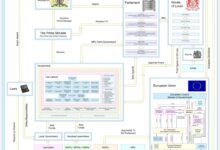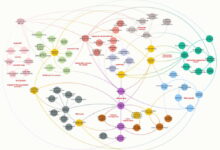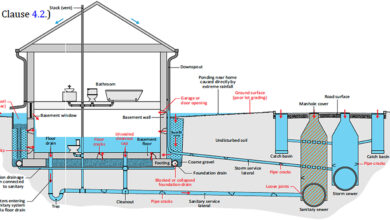System Crasher: 7 Shocking Truths You Must Know Now
Ever wondered what makes a system crasher so dangerous? These digital saboteurs don’t just cause glitches—they can bring entire networks to their knees. From innocent mistakes to malicious attacks, we dive deep into the world of system crashers.
What Is a System Crasher?

The term system crasher might sound like something out of a sci-fi movie, but it’s very real—and increasingly relevant in our tech-driven world. A system crasher refers to any software, hardware, user behavior, or malicious code that causes a computing system to fail unexpectedly. This can range from a frozen app on your phone to a complete server meltdown affecting thousands of users.
Defining the Term
At its core, a system crasher is anything that disrupts normal system operations by triggering an unhandled error, resource exhaustion, or security breach. It’s not always intentional—sometimes a poorly coded app update can act as a system crasher without any malicious intent.
- Can be software, hardware, or human-induced
- Triggers system instability or total failure
- May result from bugs, overloads, or cyberattacks
“A system crasher doesn’t need to be sophisticated—just effective at exploiting a single weak point.” — Cybersecurity Today, 2023
Types of System Crashers
System crashers come in many forms. Some are accidental, while others are engineered for destruction. Understanding the categories helps in prevention and mitigation.
- Software Bugs: Poorly written code that causes memory leaks or infinite loops.
- Hardware Failures: Overheating CPUs, failing SSDs, or power surges.
- Malware: Viruses, ransomware, or logic bombs designed to crash systems.
- User Errors: Accidental deletion of critical files or misconfiguration.
- Distributed Denial-of-Service (DDoS): Floods a system with traffic until it collapses.
Each type exploits different vulnerabilities, but all lead to the same outcome: system failure. For more on common software vulnerabilities, check out OWASP’s Top 10.
How System Crashers Work
To truly understand the threat, we need to dissect how a system crasher operates. Whether it’s a script kiddie running a botnet or a rogue process consuming all RAM, the mechanics are both fascinating and alarming.
Exploiting System Resources
One of the most common ways a system crasher brings down a machine is by exhausting critical resources. This includes CPU cycles, memory (RAM), disk space, or network bandwidth.
- Memory Leaks: A program fails to release memory after use, gradually consuming all available RAM.
- CPU Spikes: Infinite loops or recursive functions can max out processor usage.
- Disk Saturation: Logs or temporary files grow uncontrollably, filling storage.
For example, a simple Python script with an infinite loop like while True: pass can freeze a system if run without limits. This is a classic example of a self-inflicted system crasher.
Triggering Kernel Panics
The kernel is the heart of any operating system. When a system crasher manages to corrupt kernel memory or execute unauthorized instructions, it can trigger a kernel panic (Linux) or a Blue Screen of Death (Windows).
- Occurs when the OS detects an unrecoverable error
- Often caused by faulty drivers or hardware conflicts
- Results in a complete system halt
According to kernel.org, many kernel panics stem from third-party drivers that bypass standard safety checks. This makes driver validation a critical defense against system crashers.
Famous System Crasher Incidents
History is littered with infamous cases where a single flaw or attack acted as a massive system crasher. These events not only disrupted services but also reshaped cybersecurity policies worldwide.
The 1997 Pentagon Hack by Jonathan James
At just 15 years old, Jonathan James infiltrated U.S. Department of Defense systems and caused critical servers to crash by altering software configurations. His actions earned him the title of the first juvenile incarcerated for cybercrime.
- Exploited outdated software on DoD servers
- Caused NASA computers to shut down for three weeks
- Estimated damage: $1.7 million
James’ case highlighted how a single individual could become a human system crasher with minimal tools. Learn more at FBI’s Cyber Stories.
2017 WannaCry Ransomware Attack
WannaCry wasn’t just ransomware—it was a global system crasher. It exploited a Windows vulnerability (EternalBlue) to spread rapidly, encrypting files and crashing systems across 150 countries.
- Infected over 200,000 computers in 24 hours
- Paralyzed the UK’s NHS hospitals
- Caused billions in damages
The attack showed how a single exploit could turn into a worldwide system crasher when patches are ignored. Microsoft had released a fix weeks prior, but many systems remained unpatched.
System Crasher vs. Hacker: What’s the Difference?
While often used interchangeably, a system crasher and a hacker are not the same. Understanding the distinction is crucial for accurate threat assessment and response.
Intent and Motivation
Hackers typically aim to gain access, steal data, or maintain persistence in a system. Their goal is often stealth and control. In contrast, a system crasher may not care about access—only about disruption.
- Hacker: Motivated by data theft, espionage, or financial gain.
- System Crasher: Motivated by chaos, protest, or personal vendetta.
For instance, an ethical hacker might find a vulnerability and report it, while a system crasher would exploit it to bring down the server.
Methods and Tools
Both may use similar tools—scripts, exploits, bots—but their usage differs. A hacker uses them to penetrate and explore, while a system crasher uses them to overload and destroy.
- Hackers use port scanners and password crackers for access
- System crashers use stress tools like LOIC (Low Orbit Ion Cannon)
- Some tools, like Metasploit, can be used for both purposes
The line blurs when hacktivist groups like Anonymous launch DDoS attacks—technically hacking, but functioning as system crashers.
How to Detect a System Crasher
Early detection is key to minimizing damage. Whether it’s a rogue process or an external attack, recognizing the signs of a system crasher can save your network.
Monitoring System Performance
Unusual spikes in CPU, memory, or network usage are red flags. Tools like Task Manager (Windows), Activity Monitor (macOS), or htop (Linux) can help identify abnormal behavior.
- Sudden 100% CPU usage without user action
- RAM consumption growing rapidly
- Unexpected network traffic to unknown IPs
Automated monitoring solutions like Nagios or Zabbix can alert administrators in real time, providing early warnings of potential system crashers.
Analyzing Logs and Error Messages
System logs are treasure troves of information. A system crasher often leaves traces in log files before or during an attack.
- Repeated failed login attempts
- Kernel error messages (e.g., ‘Out of memory: Kill process’)
- Unexpected service shutdowns
Using tools like Splunk or ELK Stack, IT teams can correlate log data to detect patterns indicative of a crasher in action.
Preventing System Crasher Attacks
Prevention is always better than recovery. Implementing robust defenses can stop a system crasher before it causes harm.
Regular Updates and Patching
Many system crashers exploit known vulnerabilities. Keeping software up to date closes these doors.
- Enable automatic updates for OS and applications
- Prioritize security patches from vendors
- Use vulnerability scanners like Nessus or OpenVAS
According to NIST’s National Vulnerability Database, over 60% of breaches involve unpatched systems.
Implementing Firewalls and Intrusion Detection
Firewalls act as gatekeepers, while intrusion detection systems (IDS) monitor for suspicious activity.
- Use next-gen firewalls with deep packet inspection
- Deploy Snort or Suricata for real-time threat detection
- Configure rules to block known malicious IPs
These tools can stop DDoS attacks and malware before they trigger a system crash.
Recovering from a System Crash
Even with the best defenses, a system crasher might get through. Knowing how to recover quickly minimizes downtime and data loss.
Immediate Response Steps
When a system crashes, the first few minutes are critical.
- Isolate the affected system to prevent spread
- Check logs for root cause analysis
- Restart services in a controlled environment
Never restart blindly—understand what caused the crash to avoid repetition.
Data Backup and Restoration
Regular backups are your safety net. If a system crasher corrupts data, you can restore from a clean backup.
- Follow the 3-2-1 rule: 3 copies, 2 media types, 1 offsite
- Test backups regularly to ensure integrity
- Use versioned backups to roll back to pre-crash state
Cloud solutions like AWS Backup or Azure Recovery Services offer automated, secure backup options.
Legal and Ethical Implications
Creating or deploying a system crasher isn’t just technically risky—it can land you in jail. The legal landscape is clear: unauthorized disruption is a crime.
Criminal Consequences
Laws like the Computer Fraud and Abuse Act (CFAA) in the U.S. impose severe penalties for causing system outages.
- Fines up to $500,000
- Prison sentences of 10+ years
- Civil lawsuits from affected organizations
Even script kiddies running DDoS tools have faced federal charges.
Ethical Hacking vs. Malicious Crashing
There’s a fine line between testing system resilience and causing harm. Ethical hackers operate under permission and guidelines.
- Always obtain written authorization
- Follow scope and rules of engagement
- Report findings responsibly
Organizations like EC-Council promote certifications like CEH to formalize ethical hacking practices.
What is a system crasher?
A system crasher is any software, hardware, user action, or malicious code that causes a computing system to fail unexpectedly. It can be accidental or intentional and ranges from a frozen app to a nationwide outage.
Can a virus be a system crasher?
Yes, many viruses are designed to act as system crashers by consuming resources, corrupting files, or triggering system errors. Ransomware like WannaCry is a prime example.
How do I protect my computer from system crashers?
Keep your software updated, use antivirus and firewall protection, avoid suspicious downloads, and regularly back up your data. Monitoring system performance can also help detect issues early.
Is creating a system crasher illegal?
Yes, if done without authorization and with intent to disrupt, creating or deploying a system crasher violates laws like the CFAA and can result in criminal charges.
What’s the difference between a crash and a freeze?
A crash usually means the system or app stops completely and may restart, while a freeze means it becomes unresponsive but hasn’t shut down. Both can be caused by a system crasher.
Understanding the nature of a system crasher is essential in today’s digital landscape. Whether it’s a bug, a hacker, or a hardware flaw, the impact can be devastating. By recognizing the signs, implementing strong defenses, and knowing how to respond, individuals and organizations can protect themselves from these disruptive forces. The key is vigilance, preparation, and a commitment to cybersecurity best practices.
Recommended for you 👇
Further Reading:









